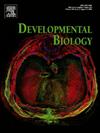Cereblon E3 ligase complex genes are expressed in tissues sensitive to thalidomide in chicken and zebrafish embryos but are unchanged following thalidomide exposure
IF 2.5
3区 生物学
Q2 DEVELOPMENTAL BIOLOGY
引用次数: 0
Abstract
Thalidomide is an infamous drug used initially as a sedative until it was tragically discovered it has highly teratogenic properties. Despite this it is now being used to successfully treat a range of clinical conditions including erythema nodosum leprosum (ENL) and multiple myeloma (MM). Cereblon (CRBN), a ubiquitin ligase, is a binding target of thalidomide for both its therapeutic and teratogenic activities and forms part of an CRL4-E3 ubiquitin ligase complex with the proteins Damaged DNA Binding protein 1 (DDB1) and Cullin-4A (CUL4A). This complex mediates degradation of the zinc-finger transcription factors Ikaros (IKZF1) and Aiolos (IKZF3), to mediate thalidomide's anti-myeloma response. To better understand the importance of CRBN and its binding partners for thalidomide teratogenesis here we analysed the expression patterns of CRBN and some of its known E3 complex binding partners in wildtype and thalidomide-treated chicken and zebrafish embryos. CRBN and DDB1 are expressed in many tissues throughout development including those that are thalidomide-sensitive while CUL4A and targets of the CRL4-CRBN E3 Ligase Complex IKZF1 and IKZF3 are expressed at different timepoints and in fewer tissues in the body than CRBN. Furthermore, IKZF3 is expressed in tissues of the eye that CRBN is not. However, although we observed rapid changes to the chicken yolk-sac membrane vasculature following thalidomide exposure, we did not detect CRL4-CRBN E3 Ligase Complex expression in the yolk-sac membrane vessels. Furthermore, we did not detect any changes in CRBN, DDB1, CUL4, IKZF1 and IKZF3 expression following thalidomide exposure in chicken and zebrafish embryos. These findings demonstrate that the anti-angiogenic activities of thalidomide may occur independent of CRBN and that thalidomide does not regulate CRL4-CRBN E3 Ligase Complex gene expression at the mRNA level.

求助全文
约1分钟内获得全文
求助全文
来源期刊

Developmental biology
生物-发育生物学
CiteScore
5.30
自引率
3.70%
发文量
182
审稿时长
1.5 months
期刊介绍:
Developmental Biology (DB) publishes original research on mechanisms of development, differentiation, and growth in animals and plants at the molecular, cellular, genetic and evolutionary levels. Areas of particular emphasis include transcriptional control mechanisms, embryonic patterning, cell-cell interactions, growth factors and signal transduction, and regulatory hierarchies in developing plants and animals.
 求助内容:
求助内容: 应助结果提醒方式:
应助结果提醒方式:


